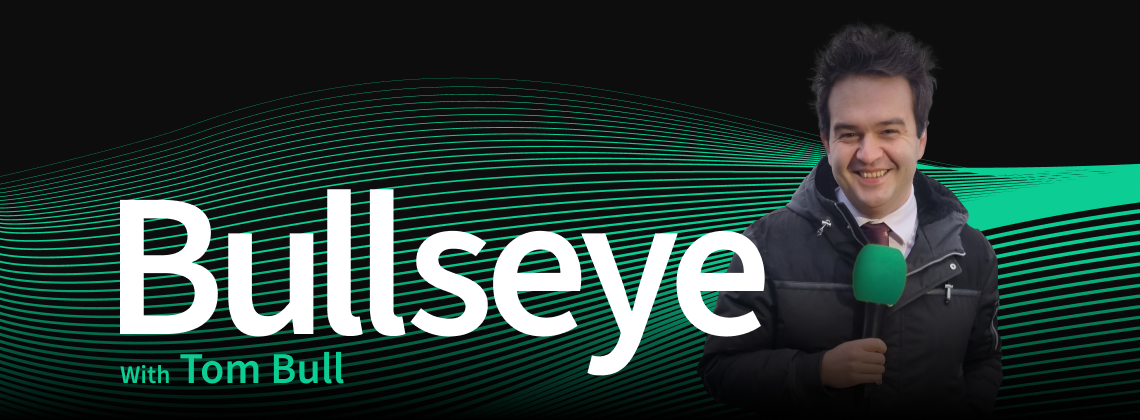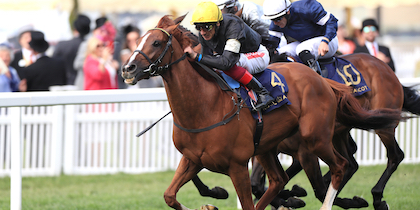
Bullseye: All signs point towards another blockbuster King George VI on Saturday
Tom Bull
19 July 2022
Racing’s current state of affairs doesn’t exactly encourage you to start jumping round the room with optimism, but Saturday’s King George VI and Queen Elizabeth Stakes is certainly enough to turn the spirit. In a climate with too many races, too few exciting clashes (particularly in the National Hunt sphere) and a general undercurrent of discontent, the status quo is momentarily restored this weekend. Even with the defection of brilliant Derby winner Desert Crown, Ascot’s famous Group 1 sets the pulse racing.
After all, what’s not to like? The old adage of three-year-olds taking on their elders for middle-distance supremacy is alive and well, with both Westover and Emily Upjohn locking horns following their fine respective performances in this season’s Classics. The effervescent Mishriff has been confirmed by the Gosdens following his luckless run in the Eclipse, while former Group 1 winner Pyledriver will also take his chance. Impressive Hardwicke Stakes winner Broome will no doubt attempt to make all once again - oh, and throw in last year’s Arc winner, Torquator Tasso, who bids to give Germany a first win in the race since Novellist nine years ago.
With any luck we’ll get another barnstorming finish, something that has become a feature of the King George – perhaps more so than any other top level race in the calendar. Indeed, in the last ten years alone we’ve seen some of the most exciting climaxes in Flat racing’s history. Enable vs Crystal Ocean is perhaps the battle that lingers longest in the memory, but Danedream’s tete-a-tete with Nathaniel and Postponed’s final furlong fisticuffs with Eagle Top were epic duels too. Duke Of Marmalade against Papal Bull was another pugilist’s dream, as was Hurricane Run’s three-way fight in the denouement of the 2006 edition. The unique size and layout of Ascot’s home straight make the visual aesthetics of these great battles all the more pleasing. Hopefully this year’s renewal will continue in a similar vein.

Stradivarius has demonstrated how durable those at the top of the staying tree can be, and how much prize-money they can make
Middle Distance Is Back In Vogue
With that in mind, it's encouraging that middle-distance breeding has been given a new lease of life in the last couple of seasons. A big concern of mine a few years ago was that our breeding pattern was going the same way as that of Australia – with thoroughbreds reared for speed, rather than stamina. As it is down under, only around seven percent of racehorses are bred to for staying distances. And although our speedy pedigrees remain at the forefront of most commercial minds, big performances from horses in our most prestigious middle distance races have made staying pedigrees a little more fashionable again.
One of the crucial factors has been the distribution of middle-distance ballast. Twelve different yards were represented in this year’s Derby, nine in last year’s, and ten in the year before. That’s a steady improvement on the seven in Camelot’s Derby, seven in Anthony Van Dyck’s, and the same number in Masar’s. Part of the reason for this is the loosening of the grip Aidan O’Brien has on the race, part is the resurgence of Charlie Appleby and Godolphin, and part is the fact that some time before his death, Galileo’s star had already started to wane. Coolmore faces one of its biggest challenges in finding a replacement for the great stallion, but in reality they will never find one as successful. As tragic as it was that we lost such a great champion both on the racecourse and at stud, there’s no doubt it opens up the playing field to other yards and breeders.
It's important to realise the importance of Stradivarius in all this. Owner Bjorn Nielsen has bucked all the trends by keeping his star stayer in training year upon year, and although he’s likely to struggle to get Stradivarius on a Flat roster, we know he’s going to try as hard as he can. What’s had a greater impact though, is the general influence Stradivarius has had on the racing world. He alone has demonstrated how durable those at the top of the staying tree can be, how popular they can become if kept in training, and how much prize-money they can make if continuously performing at the highest level.
Fortunately, the Prix de l’Arc de Triomphe remains one of the most influential and desirable races in the world. Japan’s middle-distance breeding will always thrive while they seek to win the famous race (let’s hope they continue to come up short!), Germany continues to export middle-distance champions (Torquator Tasso, Danedream, Novellist), and France usually has a tight hold on the race despite the fading presence of Andre Fabre.
Whoever wins the King George on Saturday will no doubt shoot to the top of the market for the race, and that’s exactly as it should be. And no matter how exciting sprint races are, how commercially viable speed has become, there’s no substitute for the hurly burly of a Group 1 1m4f contest at Ascot, Epsom, or Longchamp. Let’s hope we can keep the momentum up and enjoy these great middle-distance races for years to come.
A Welcome Respite
Sandown’s card on Wednesday night isn’t the most star-studded, but the 0-90 handicap towards the end of the card brings with it a fair amount of intrigue.
Franatack is a fair favourite off what looks a decent opening handicap mark, but the way could be paved for Maytree Respite (8.08pm Sandown, Wednesday) to chalk up another victory.
The son of Mehmas got off the mark in handicaps with a narrow victory over Miramichi at Newbury two weeks ago and should be able to follow up, given the strength in depth of that contest - the runner-up has since run well again, while back in fourth was a previous winner. He had to knuckle down in the closing stages but travelled best, and given it was his first foray over 1m2f, he should have more to come at the trip. A 3lb rise could have been a lot more harsh and he has strong claims of landing a third career victory.
Tom Bull
19 July 2022


